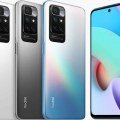- Naxon Tech
- All Products
- iQOO U5x Specifications, Price and Availability
iQOO U5x Specifications, Price and Availability



- CPU: Snapdragon 680 SoC
- RAM: 4GB/8GB
- Storage: 128GB
- Display: 6.51-inch IPS LCD
- Camera: 13MP + 2MP
- OS: Android 11
iQOO U5x flaunts a 6.51 inches LCD display with an HD+ ( 720 x 1600 pixels ) resolution, 89% screen-to-body ratio, and 60Hz refresh rate. Coming to camera, the smartphone features a 13-megapixel primary lens and a 2-megapixel macro sensor. For selfies, the phone boasts an 8-megapixel front-facing camera under the waterdrop notch. The device is packed with a 5000mah battery and supports 10W charging.
iQOO U5x comes equipped with a Snapdragon 680 octa-core SoC that comes coupled with Adreno 610 GPU. The device is running on Android 11 with Origin OS Ocean skin on top. iQOO U5x comes in two configurations with 4GB + 128GB priced at 849 yuan ( Rs. 10,200 approx ) and 8GB + 128GB priced at 1049 yuan ( Rs. 12,600 approx ). It can be purchased from Vivo online store, JD.com and major e-commerce stores across the globe.
Specs
General
| Released | 26 March, 2022 |
| Status | Available |
Design
| Type <strong>Design Type</strong> called form factor refers to a mobile phone's size, shape, and style as well as the layout and position of major components of phone. There are three major form factors seen in mobile phones => bar phones, folding phones and sliding phones. | Bar |
| Dimensions | 163.96 x 75.2 x 8.28mm |
| Build | Polycarbonate |
| Weight | 179 grams |
| Colors | Polar Blue, Star Black |
Display
| Size | 6.51-inch |
| Resolution | 720 x 1600 pixels |
Media
Camera
| Primary <strong>Camera</strong> is able to capture photographs and usually videos, The most important characteristics of a camera are the resolution (measured in megapixels), lens focus type (fixed or automatic), higher megapixel cameras are known to capture higher quality photos, but not always a good measurement of the photos quality. | 13MP + 2MP |
| Secondary | 8-MP |
Software
| Operating System <strong>OS => </strong> Every computer system run on a base software called Operating System (OS). Operating System controls all basic operations of the computer (such as smartphone, PDAs, tablet computers and other handheld devices). The Operating System allows the user to install and run third party applications (apps), apps are used to add new functionality to the device. | Android 11 |
| User Interface <strong>UI</strong> or user interface of a device is the look and feel of the on-screen menu system. How it works, its color scheme, how it responds to button presses, all of these things are part of the user interface. | Funtouch OS 11.1 |
Hardware
| CPU <strong>CPU</strong> (Central Processing Unit) mostly known as processors, CPU processes instructions in order to carry out certain functions that make your device operate properly. Processors are often described as the brain of computers, smartphones and tablets, Smartphones and tablets rely on processors to carry out their every task, Processors are an incredibly important factor in selecting any type of computing device, including your smartphone. | Snapdragon 680 SoC |
| GPU <strong>GPU</strong> (Graphics Processing Unit) is a single-chip processor designed to rapidly manipulate and alter memory to accelerate the creation of images in a frame buffer intended for output to a display, This includes things such as lighting effects, object transformations, and 3D motion. | Adreno 610 |
| RAM | 4GB/8GB |
| Internal Storage <strong>Internal Storage</strong> is a data storage space (flash memory) mostly used in smartphones, tablets and other electronic devices where operating system, apps, music, photos, videos, files and other user data Is stored. | 128GB |
| Sensors <strong>Sensors</strong> are electronic components that detects and responds to some type of input from the physical environment. The specific input could be light, heat, motion, moisture, pressure and location, The output is generally a signal that is converted to use in computing systems, a location sensor, such as a GPS receiver is able to detect current location of your electronic device. | Accelerometer, Ambient light sensor, proximity sensor, virtual Gyroscope, Electronic compass, and a side-mounted fingerprint sensor |
Connectivity
| SIM <strong>SIM</strong> (Subscriber Identity Module) is a small card that contains mobile network subscriber's account information. This allows the phone using the card to attach to a mobile network. The SIM card is most commonly associated with GSM and UMTS mobile networks. Moving a SIM card from one phone to another allows a subscriber to switch mobile phones without having to contact their mobile network carrier. SIM cards can also be used by a phone to store limited amounts of data, such as phone numbers and text messages. | Standard SIM |
| Bluetooth <strong>Bluetooth</strong> is a wireless communications technology for exchanging data between mobile phones, headsets, computers and other network devices over short distances without wires, Bluetooth technology was primarily designed to support simple wireless networking of personal consumer devices. | Bluetooth 5.0 |
| Infrared <strong>Infrared</strong> connectivity is an old wireless technology used to connect two electronic devices. It uses a beam of infrared light to transmit information and so requires direct line of sight and operates only at close range. | |
| Wi-fi <strong>Wi-Fi</strong> is a popular wireless networking technology using radio waves to provide high-speed network connections that allows devices to communicate without cords or cables, Wi-Fi is increasingly becoming the preferred mode of internet connectivity all over the world. | Wi-Fi 2.4G/5G |
| USB | micro USB port |
Data
| 4G Bands | Yes |
Battery
| Capacity <strong>Battery Capacity</strong> is a measure (typically in Amp-hr) of the charge stored by the battery, and is determined by the mass of active material contained in the battery. The battery capacity represents the maximum amount of energy that can be extracted from the battery under certain conditions. | 5000mah |










